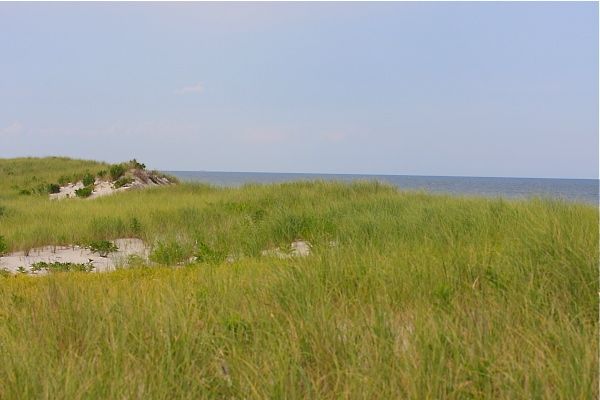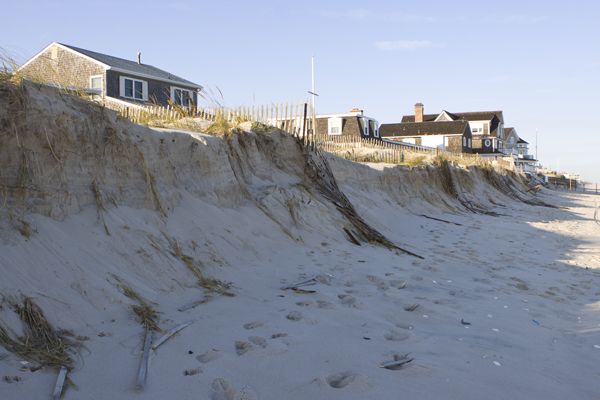Methodology for Calculating Costs & Benefits Is Key
Too Many “Free Riders” on the Storm – Huge Social Costs
I hope that when they do a real economic analysis to determine the value of “just compensation”, that ALL of the “free rider” benefits and social costs are calculated and the net result is negative – resulting in a BIG stiff fee to those selfish folks who brought this lawsuit, and their reckless fellow fools who live in similar locations. ~~~ Bill Wolfe
Yesterday’s NJ Supreme Court decision on the issue of whether oceanfront property owners should be compensated for their loss of views caused by building a protective dune on their property is getting lots of media play, e.g. see Tom Johnson, NJ Spotlight: High Court Finds in Favor of Dunes, Not Beach-Front Views
I haven’t read the opinion yet, but from what I can tell, the Court agreed that “just compensation” was required for the taking, but that the amount of compensation must consider the benefits provided to the property owner by the dune.
So, I thought I’d make a few points on all that.
First of all, the coverage fails to distinguish natural dunes from engineered dunes. As I’ve written, there’s a big difference, see: Orwell: On Dunes and “Seaside Recreation Platforms”
More importantly, in emphasizing the
widespread consensus emerged that communities with established dune systems fared far better than towns without such established natural barriers
the coverage also is reinforcing the false notion that dunes are a panacea.
Like beach replenishment projects, dunes create a false sense of security and invite inappropriate development in hazardous locations.
Before DEP was taken over by the Christie amateurs, DEP used to consider this false perception an “impediment” to coastal management goals and DEP used to warn the public about this:
All of the impediments to meeting this 309 programmatic objective that appeared in the last New Jersey Coastal Zone Section 309 Assessment and Strategy remain. These include lobbying efforts of special interest groups, legal challenges to DEP permit decisions, provision of flood insurance through the National Flood Insurance Program, and public perception that large-scale beach nourishment projects eliminate vulnerability to coastal hazards.
But, in rejecting a huge compensation payout, the Court apparently required some form of more sophisticated economic analysis of the calculation of “just compensation”.
It appears that, at a minimum, this calculation must include consideration of the economic benefits provided by the protective dunes.
The scope and methodology of this analysis are key – both with respect to the economic benefits provided by dunes, but also to the costs of coastal development in hazardous locations.
From what I suspect – without having read the opinion – I assume that the new compensation calculation the court directed is narrowly limited in scope to the economic benefits provided by the dunes to the individual property property owner – as opposed to, for example, properties that lay behind the dune or further away along the back bay.
But, the full costs and benefits are much broader than the individual property owner.
Similarly, development in a hazardous location imposes significant “external costs” to neighbors, the community, and all taxpayers – federal, state, and local.
People who build in hazardous locations should not be compensated one thin dime.
Just the opposite, they should pay premiums, taxes, and fees for all the costs they impose on their neighbors, community, and taxpayers and for all the benefits they receive as “free riders”.
Here are just some of those costs:
1. Houses is hazardous locations do not pay the true costs of insurance – all federal taxpayers subsidize those federal flood insurance program below market rates. Make those people pay higher premiums. Give the rest of us a tax break.
2. Development in hazardous locations increases the entire community’s risk ratings, and thus insurance costs. Make those in the most hazardous locations – like beach and bay fronts and along rivers and streams – pay a fee for this cost they impose on the community.
3. Homes in hazardous locations require more emergency services, and put first responders at risk. They also require additional public services and maintenance. Make them pay special assessments to pay for those services.
4. Development in flood hazard areas displaces natural flood storage and makes flooding worse for nearby properties (think of putting a cinder block in a full bath tub). They should pay a fee for the volume of water they displace, which makes flooding worse in other locations.
5. Houses hit by flooding can become projectiles and damage nearby homes and public infrastructure. We all pay for this damage caused by floating unmoored homes sand debris.
6. And then when the catastrophic storm hits, we all pay billions to pay for the damages – emergency response, cleanup, and rebuilding. This bailout amounts to a HUGE subsidy and welfare to those who choose to live in hazardous locations.
And of course, irrespective of storms, private property owners reap huge benefits from public investments like roads, sewer, water, sidewalks, parks and schools, not just protective dunes.
All the benefits of public investment to private property owners should be recouped.
All the costs imposed on society by private development should be captured and compensated for.
So, I hope when they do a real economic analysis to determine “just compensation”, that ALL of these private benefits and social costs are calculated and the net result is negative – resulting in a BIG stiff fee to those selfish folks who brought this lawsuit, and their reckless fellow fools who live in similar locations.
Riders on the storm, riders on the storm
Into this house were’ born, into this world we’re thrown. ~~~~ Riders on the Storm – The Doors


